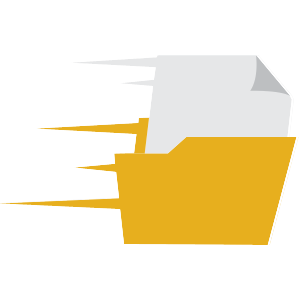August 28, 2024
August 28, 2024
Members of my CTF team & the SPS train repair company will meet NEWAG, the train manufacturer, in court on Wednesday (you might remember the 37C3 talk; link in reply). The lawsuit was initiated by NEWAG, but, according to reporting, counterclaims were filed by SPS as well. 1/3 https://t.co/TcPhDfpz17
— Gynvael Coldwind (@gynvael) August 26, 2024
IPv6 CVE-2024-38063 PoC (Denial of Service). I haven't tested it yet, but the description appears robust.
— farmpoet (@f4rmpoet) August 26, 2024
I still think achieving Remote Code Execution (RCE) with this vulnerability is highly challenging due to the existing constraints, but I'm open to being proven wrong. https://t.co/UAqr5Ic5M9
— Steve Ragan ⚠️ (@SteveD3) August 26, 2024
Just finished a one-week trip to China. I've now "survived" all the major (~20) L2 self-driving and robotaxi vehicles in both the US and China. Some thoughts & observations:
— Freda Duan (@FredaDuan) July 2, 2024
▶️L2 self-driving
I tested major brands like $Huawei, $Li, $NIO, $Xpeng, and $Xiaomi. Overall, they… pic.twitter.com/2iTluT24SU
What We Learned Inside a North Korean Internet Server: How Well Do You Know Your Partners?
Some analysis of 31G of data leaked from DPRK servers.
https://www.38north.org/2024/04/what-we-learned-inside-a-north-korean-internet-server-how-well-do-you-know-your-partners/This is allegedly the data:

cloud.star.net.kp.zip
28.9 GiB
source:
We have released the 31 GB of North Korean leaked data from their cloud server. This data set mentioned in the 38north article. https://t.co/5A7US2xSnW@38northnk @martyn_williams @nknewsorg @RecordedFuture @lorenzofb @josephfcox @vxunderground @BushidoToken @thegrugq
— Bizarredect (@Bizarredect) August 28, 2024
As I’m writing my PhD application, I’m finding a lot of very funny articles discussing the lessons learned from various wars. These articles are from 1870 -> 1910 and they are just amazing.
One spent 8 pages explaining why the lance is an inferior cavalry weapon compared to the sword (1903). He makes a compelling argument that the sword is better both for charging into opposing cavalry and for shock tactics against soldiers. The broader question of “how useful is a cavalry charge in modern warfare?” doesn’t come up.
Another article, from 1873, takes issue with the idea of adopting the Prussian tactics of a “skirmisher swarm.” This would replace the perfectly serviceable double line of soldiers. Any indication that the line faired poorly in the Franco-Prussian war is just because the line wasn’t used correctly.
If troops in line are only handled so as to meet the requirements of the day, and so as to avoid unnecessary exposure to fire, the formation will, I believe, assert its superiority over any other in the same manner as it has always hitherto done.
Granted, there may be something to allowing men more space when advancing:
It is possible that it may be found advantageous to allow more freedom to troops advancing in line, by giving each man in the ranks 30 inches instead of 24, or by giving each company a small interval between those on its right and left : these are minor points which can easily be worked out on the drill-ground.”
This is an absolute treasure of bad analysis coupled with his mental model of warfare that is totally antiquated. It is all so deliciously funny, I can’t stop reading.
Next is “the role of cavalry in modern war” (1905). The analysis is based on the Russo Japanese war and is (1) as racist as you’d expect, (2) wonderfully smug, and (3) completely utterly wrong. No notes.
References
Major-General M. Von Czerlieu (1903) The Lance as the Weapon of Cavalry, Royal United Services Institution. Journal, 47:299, 39-47, DOI: 10.1080/03071840309418118
(1873) Is a Radical Change in the Tactical Formation of our Infantry Really Necessary?, Royal United Services Institution. Journal, 17:73, 411-423, DOI: 10.1080/03071847309417801
Von Pelet-Narbonne (1905) The Rôles of Cavalry in Modern War, Royal United Services Institution. Journal, 49:325, 287-292, DOI: 10.1080/03071840509418682
Add a comment: